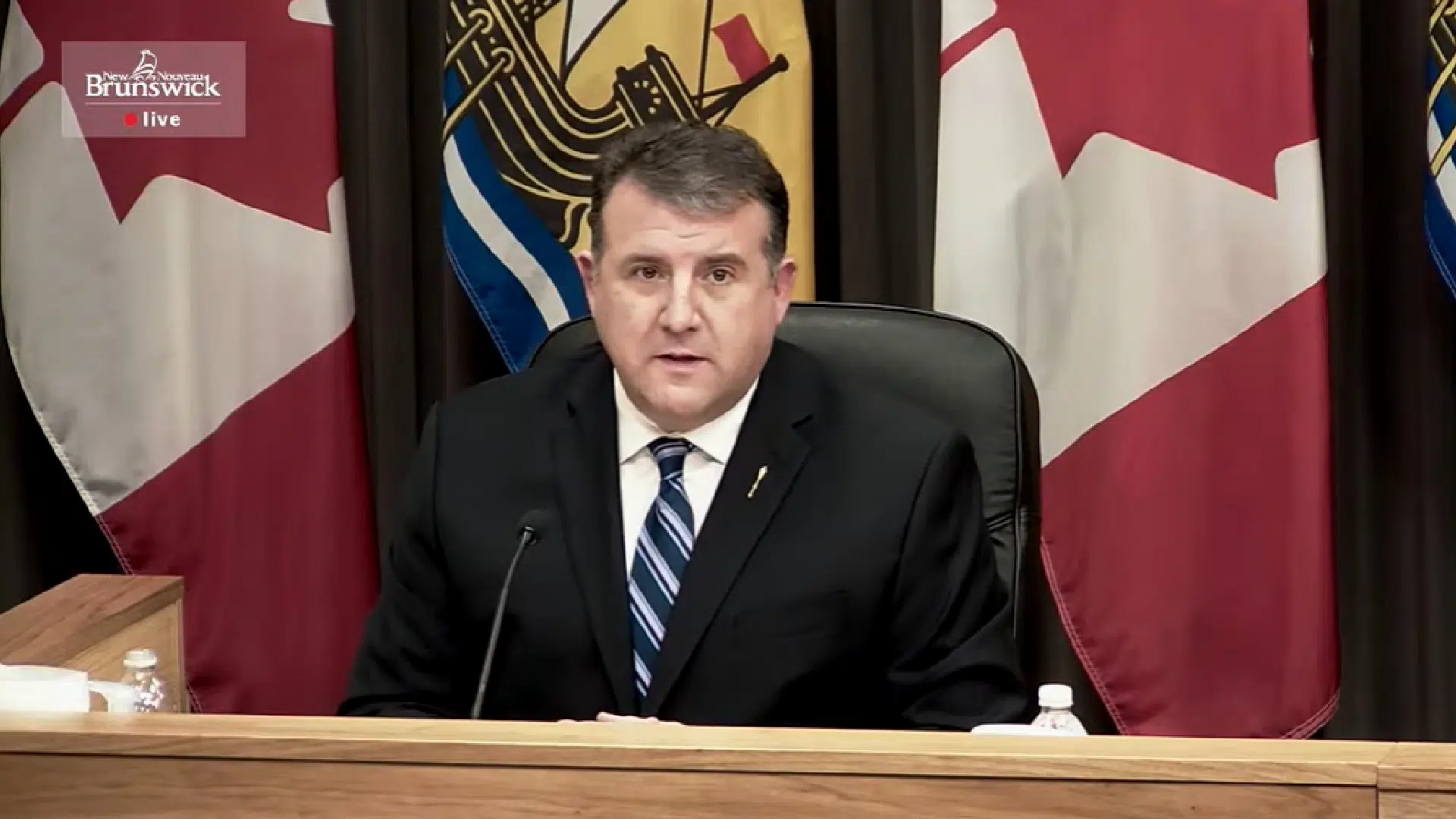New Brunswick will slash the number of local government entities in the province from 340 to 90.
The Higgs government unveiled its long-awaited white paper on local governance reform on Thursday.
Local Governance Reform Minister Daniel Allain said the changes will give all New Brunswickers the ability to elect their leaders at a local level.
“From the moment I stepped into this role, the purpose of this endeavour was clear: It was time to modernize our local governance system,” Allain said during a news conference Thursday.
Under the new structure, the number of local governments — cities, towns, villages, rural communities and regional municipalities — will be reduced from 104 to 78.
There will also be 12 rural districts made up of the local service districts (LSDs) that have not become part of a local government. Currently, New Brunswick has 236 local service districts.
Elected advisory committees will be formed for each of the rural districts and elections will be held in the same manner as general municipal elections. Currently, the 30 per cent of New Brunswickers who live in LSDs do not have a say in how their area is run.
Several municipalities will be merged into larger local governments and, in some cases, will also be merged with some neighbouring LSDs:
- St. George and Blacks Harbour;
- Sussex and Sussex Corner;
- Beaubassin-Est and Cap-Pelé;
- Sackville and Dorchester;
- Alma, Hillsborough and Riverside-Albert;
- Chipman and Minto;
- Cambridge-Narrows and Gagetown.
Other communities will be expanded to include parts of surrounding LSDs, including St. Martins, Hampton, Grand Bay-Westfield, Saint Andrews, St. Stephen, Moncton, Dieppe, Salisbury, Shediac, Port Elgin, Rogersville, Saint-Louis-de-Kent, Richibucto, Rexton, Bouctouche, Saint-Antoine and Cocagne.
The communities of Saint John, Rothesay, Quispamsis, Grand Manan, Campobello Island, Riverview, Memramcook and Petitcodiac, among others, will not see any changes to their boundaries.
The newly restructured local governments and rural districts would officially take effect on Jan. 1, 2023, said Allain.
“Work on restructuring will begin early January with special local elections and byelections taking place where required in November of 2022,” he said.
Changes to regional service commissions
The scope of the province’s 12 regional service commissions (RSCs) will also be expanding as part of the newly-announced reforms.
Initially, the RSCs have been responsible for things like solid waste management, planning and building inspection services.
They will now also provide leadership in economic development, tourism promotion, community development, regional transportation, recreational infrastructure, and public safety.
The province is also strengthening governance to give all entities a voice around the table. Each commission board will include mayors of local governments and a councillor of the rural district advisory committee.
A weighted voting formula, based on population, will be implemented to improve the operation of boards and reflect a democratic balance.
Local entities which opt out of a voluntary service provided by an RSC will not be permitted to vote on any issues related to that service other than the overall budget of the commission.
Property taxes
Paying for services you do not have access to is often brought up when the issue of amalgamation is discussed.
Allain said residents in the new local governments and rural districts will only pay for the services they get.
The white paper says local governments and rural districts will maintain different tax rates in different areas to reflect service levels.
Any increases or decreases will be determined during the transition period and will be phased in, said Allain.
The reforms will also give local governments and rural districts flexibility to set the business property tax rates at 1.4 to 1.7 times the local residential rate, instead of being fixed at 1.5 times.
Opposition reaction
The Liberal critic for Local Government Keith Chiasson was concerned the province is downloading responsibilities like economic development and tourism promotion onto municipalities.
“One principle that was very important for us was equal opportunity. We have to make sure that each region has the same opportunity to flourish and develop,” noted Chiasson.
Chiasson adds these are major changes around the province and the local governance transition team will have to play a pivotal role going forward.
Did the amalgamations go far enough in areas such as Greater Moncton or Greater Saint John which were left largely untouched?
Chiasson said it depends on who you ask but it breaks down to urban versus rural.
“If you talk to people in rural New Brunswick, I’m sure they will say they went far enough. If you talk to people in the city they may think they didn’t go far enough. It’s a tough question to answer on that.”




